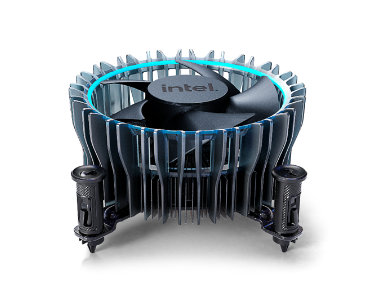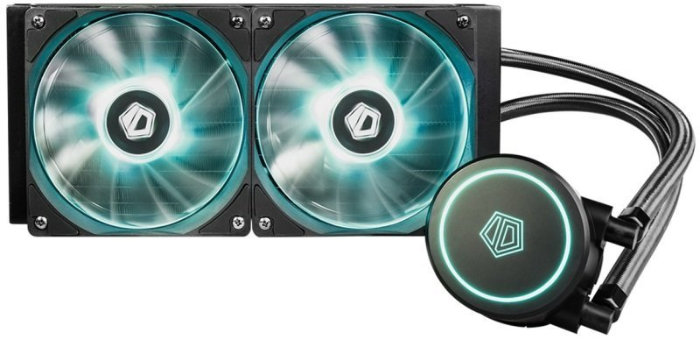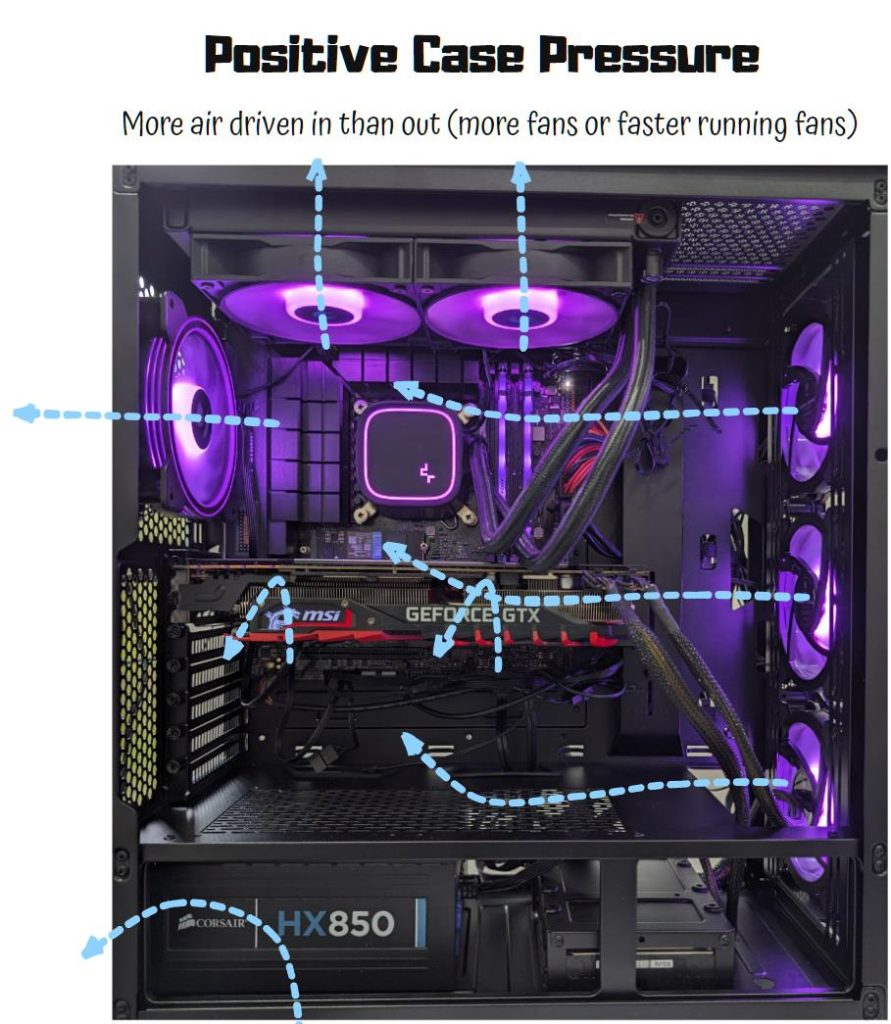Choosing a PC cooling solution
Aftermarket cooling solutions used to be something you’d only find tech enthusiasts and overclockers adding to their build. But these days, if you choose a powerful CPU that’s not designed with efficiency in mind, the chances are it won’t come with a cooler in the box. You’ll need to choose an aftermarket cooling solution compatible with your CPU socket, and rated to cool it, and do it quietly!
So how do you find a good CPU cooler and do you need case fans to go with that?
Silence is golden
When your computer isn’t working hard during gaming sessions or rendering video, you want it to be quiet. So you also want to make sure that you get a cooling solution that can easily and quietly keep your processor cool at normal running temperatures. If you have case fans, you want to make sure that you choose the right types and that your motherboard can control them and slow them down when they don’t need to be running at top speeds.
Near silence is harder to achieve when your GPU and CPU are working near 100% capacity during a gaming session. Cooling systems have to move into overdrive to cope with the extra heat this produces, and this often results in more noise. But when you’re gaming or working, that’s usually an acceptable trade-off.
How many decibels is audible for a CPU cooler?
A pin dropping in a quiet room registers at around 10 decibels, a soft whisper at 20 decibels, and a normal conversation hums along at 60 decibels. A CPU cooler that is rated to cool at a noise level under 30 dB would be acceptable to some if the computer is in a cupboard or under a large desk. Ideally, you should aim for 25 dB or less so that in normal operating conditions your computer is virtually inaudible.
Air Coolers
The most common type of CPU cooler transfers heat from the CPU using several heat pipes attached to a large radiator design with many fins and a fan that blows across these fins to dissipate the heat. These are simply called ‘air coolers’.

What are AIO coolers?
AIO coolers are sealed pre-built coolers usually comprising a CPU heat sink containing a pump and pipes connecting this to a case mountable radiator and fans. These units are as easy as air coolers to install and offer little to no concerns about coolant leaks inside your case.
Water can cool CPUs far faster than air. By pumping water across a heat-sink attached directly to the CPU, and then cooling that water by blowing fans across a radiator mounted inside the computer case has been a popular enthusiast option for many years. Because the case mounted radiators can expose more surface area and utilize more fans than CPU air coolers, this solution can be more efficient and quieter than pure air cooling.
In the early days of water cooling, custom constructions of pipes and pumps containing water right next to an electrical device were always the playground of extreme tech enthusiasts. These days, this isn’t the case with the advent of something called AIO (all in one) water coolers.

Air Coolers vs AIO Water Coolers
AIO coolers use water to cool the CPU, which results in greater cooling efficiency than an air cooler. The pump head that fits over the CPU on an AIO cooler are much smaller than a large heat-sink and fan combination and will allow much more visibility of your motherboard and RAM than an air cooler.
AIO pump heads are also often illuminated with LEDs and even screens that can sometimes show custom designs or CPU temps.
If you want virtual silence, however, an AIO cooler isn’t always the best option. These types of coolers use both a pump AND fans on the radiator. Whilst AIOs should cool more efficiently and therefore more quietly than air cooler, this is not always the case and can depend on the particular model you choose.
Pumps running at high speeds can whine, and over time, the inevitable introduction of air into the closed water system can cause unwanted pump noises.
An AIO water cooler is a more complex system than an air cooler and will invariably fail sooner, offering you less lifespan than an air cooler. Maintenance of these systems is also often either difficult or impossible, whereas fans on an air cooler can often easily be replaced.
Finally, air coolers are cheaper than AIO equivalents and there is a much larger market to choose from.
Check socket and case compatibility
When choosing either an air or AIO CPU cooler, it is imperative that you check it is compatible with the processor socket you are using in your build. All good cooler specifications will list their socket compatibility. They should come with mounting solutions to fit that compatible socket and sometimes certain coolers offer add-on mounting brackets to cope with newer socket types released after the release date of the cooler.
Air CPU coolers can also get very large. Most motherboards have a decent amount of clearance around the CPU socket for this reason, however it’s worth checking the specs of the cooler and making sure it fits in your case, especially if you are working on a small form factor build.
Because the pump and heat-sink inside AIO coolers is relatively small, they usually have zero issues with fitting space around the CPU socket. The only things to check with this type of cooler are that you will have the correct size mounting locations available inside your case for the radiator and fans.
PWM vs DC (4 pin or 3 pin)?
There are 2 types of header on motherboards for fan and AIO pump connections. A 3 pin connector offers control of fan speeds by simply sending a different DC voltage to the fan to request different speeds. 4 pin PWM fan headers are the more modern type and the extra pin sends a ‘pulse’ to the fan to signify when the motor should run. This allows fine grained fan motor control and more efficient use of the fan motor that often means it will last longer and run more quietly.
4 pin headers are also used for the connection to the water pump in an AIO cooler to allow fine control of the pump speed. These headers work in the same way as fan headers but are just usually located nearer to the CPU and labeled differently.
Recent motherboards usually come with 4 pin fan and pump headers.
Can you connect a 3 pin fan to a 4 pin header?
Yes, a 3-pin CPU or system fan can be connected to a 4 pin header. The fourth pin that’s usually used to control the speeds of the fan will not work and the fan will just run at full speed and won’t respond to any control from the motherboard or software designed to slow it down when temperatures are under control.
Do you need case fans?
The job of a CPU cooler and the fans on your GPU are to move hot air directly away from those components. That air will sit inside your case and heat up everything else unless you do something about it. This is the role of system or case fans.
It’s always good to plan to use at least one or 2 system fans to create an airflow through your case that brings in new cool air from outside and pushes hot air from the CPU and GPU out of the case.
You can mount fans in 2 ways as either intake fans to suck air, or outtake, to blow air out. Good computer cases allow mounting fans on the front, sides, rear and bottom sides and allow you to create an airflow that suits your computer configuration and its physical location.
A computer case next to a desk or wall that blocks air intake from the back and side will be better configured to suck cool air in from the front and exhaust it from the top. A computer that sits on a desktop may be better configured with fans that take cool air in from the front and exhaust it from the rear and top. An open computer case that has a large amount of ventilation may get away with fewer case fans than a more closed case.
It’s really up to you. The good thing about cooling systems is that you can tweak your setup over time.
What is positive case pressure?
If your computer case has more, or more powerful intake fans than exhaust fans, then this will create positive case pressure. More air will be forced into your case than can be exhausted easily. This will mean that the excess air is forced out through all the gaps and vents of the case.

Positive case pressure is a good thing because it will help to reduce the amount of dust accumulating inside your case, as the dust will have little time to settle before being exhausted. It will also mean that fans inside the case aren’t fighting against an existing air current when they work, making them more efficient.
Do all CPU coolers list TDP?
The specifications of your CPU will list a TDP figure, which is the thermal design power in Watts that the CPU can produce when under load. Your cooler needs to be rated to dissipate this much heat otherwise it won’t run efficiently and will always work too hard or noisily.
If you want to overclock your CPU, you need a cooler that is rated to dissipate more Watts than your CPU is rated for, overclocks increase power use and heat generation.
Good cooler manufacturers will list the CPUs or that their cooler is compatible with and what, if any, overclocking should be possible. Companies like Noctua offer a web search that allow to search by processor model to see a list of compatible coolers and how much room for overclocking there is.
Cooler Recommendations
Aftermarket coolers will usually outperform stock coolers packaged with certain CPU models.
For all aftermarket purchases, always look online for a cooler that scores well in online reviews. Searching online will always reveal someone who’s tested a certain cooler for cooling ability and noise levels against its competitors.
Budget Build CPU Coolers
Budget builders will get the best value out of a CPU that comes with a CPU cooler in the box. These coolers are always going to be rated to cool the CPU they come with, but may not do so as quietly as an aftermarket cooler and can’t be guaranteed to support any increased temperature you might generate by overclocking your CPU. But they will save you money.
Coolers for Business Users, Creative Pros and Casual Users
Much like budget builders, if you are happy with stock CPU performance, a stock CPU cooler (if your model comes with one) will be a good choice.
As stock coolers are usually budget models that perform well enough, if you are looking for a quiet build, you should consider putting aside some budget for a good quality aftermarket air cooler.
As you probably won’t be needing to overclock your computer or show off the internals, an air cooler will provide a more cost effective and quieter solution than opting for an AIO cooler.
Gamers and Tech Enthusiasts Coolers
If you want to game or overclock, you will usually end up choosing an unlocked performance CPU model that doesn’t come with a stock cooler. So whether to purchase an AIO water cooler or an aftermarket air cooler comes down to your preferences.
An AIO water cooler will offer increased cooling performance and a much smaller footprint over the CPU, allowing you to show off more of your systems internals such as LED illuminated RAM or other internal lighting. Some models of AIO have pump heads that fit over the CPU that are fitted with LEDs or even screens that you can display unique designs or CPU temps on. If low temps and internal design matters to you, an AIO should be your choice.
If you care are about longevity and budget, however, consider sticking with a tried and high performance air cooler. There is less to go wrong, they are easier to maintain and should last you far longer.